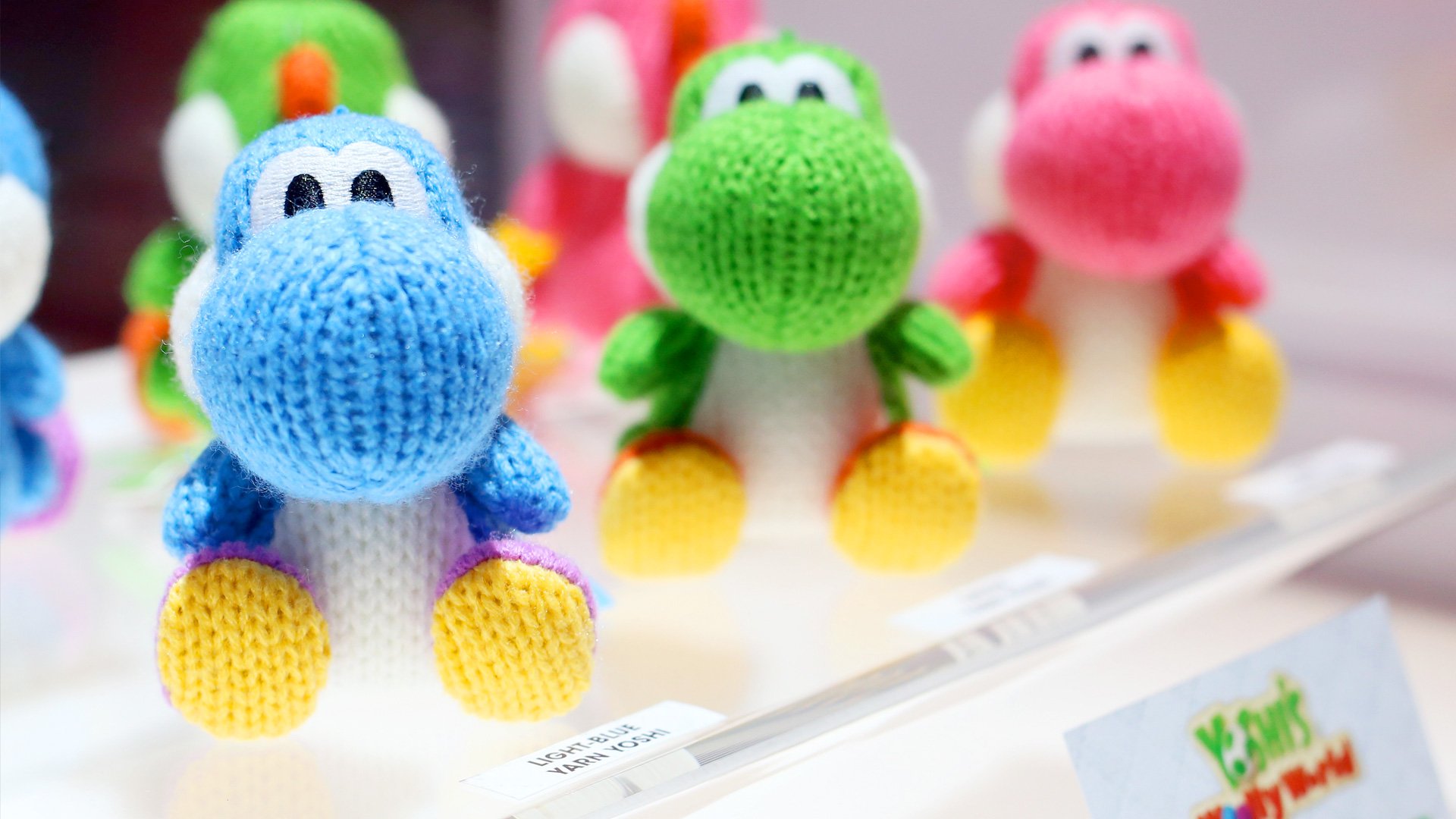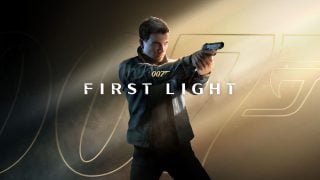There’s no denying Street Fighter’s legacy as a top contender in the fighting game space. One only needs to browse the various Capcom Fighting Collections that’ve been released to see decades of that legacy curated, though if you’re a Nintendo fan you might notice a dropoff around the mark of the millennium. In fact, no new numbered SF has made it to a home Nintendo console for the last two decades — we see you, Super Street Fighter IV on 3DS.
That changed with the Nintendo Switch 2’s launch, granting us Street Fighter 6 along with its first two years of post-launch characters now included by default. That means more than two dozen new and familiar fighters stepping into the ring across the game’s three core modes, with a few Switch-specific additions for good measure. It’s the perfect time to punch in too; barring some missteps with battle passes, SF6 stands as a well put together modern entry in the genre and a fantastic new direction for the legendary series.
If you’ve already picked up Street Fighter 6 on another console or PC (or have that as an option), this bit’s for you: Switch 2 isn’t the “best” way to play this game on a technical level. The visuals (mostly lighting and some textures) are downgraded somewhat when playing handheld, and some elements of the game are dependent on if you have an internet connection or not, which can be a factor if you play on the go.
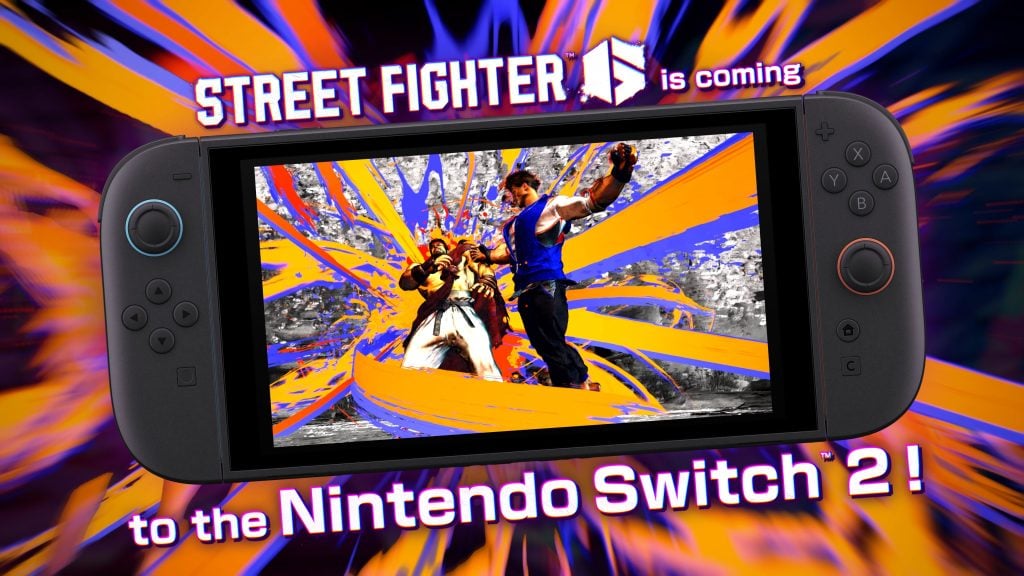
The game’s main single player draw, World Tour, takes some hits as well in both its gameplay and cutscenes — still playable, just not optimal within this mode specifically. Make no mistake though, this is still a commendable and consistent version of the game that runs well in terms of performance, with the core Versus and other modes outside of World Tour playing well no matter what configuration I had my Switch 2 in. If this is your only potential way to play Street Fighter 6, by and large you’ve got nothing to worry about.
The Switch 2-specific additions are also nothing worth considering in any real capacity. Motion controls based on the Joy-Con come off more as a novelty, and while the amiibo functionality is something we’re inclined to appreciate, it feels extraneous when compared to something like Super Smash Bros. Still, the core package is strong enough, and these modes are relegated to separate menus you might never realize are there if you’re only after the “traditional” SF experience.
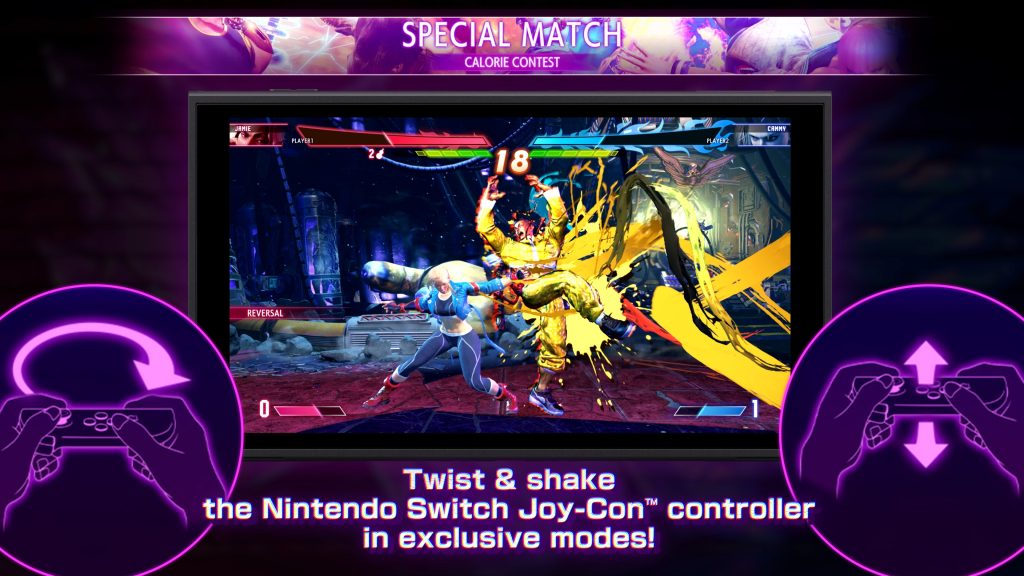
Whichever console you’re playing it on, the biggest changeup for Street Fighter 6 was its introduction of the “Drive” system. Separate from your super meter, you also have a Drive Gauge which grants your character access to a handful of universal mechanics. These include parrying, absorbing a hit while charging up a more powerful attack, countering out of a block or recovery, and empowering your special moves. All of those will sound exceptionally familiar to Street Fighter veterans, as they’re effectively all the game-specific universal mechanics (SF3’s parry, SF4’s Focus Attack, Alpha Counters) and EX specials rolled into a single system.
Giving the whole roster access to all of these levels the playing field, though some tactics end up more prevalent than others. Drive Rush in particular feels essential to keeping pressure on in most matches, as a dash-in and combo extender. And while the floor is raised for each character, there are some differences in elements like start up time and frame data to these features that somewhat run contrary to that balanced goal. Still, as someone who doesn’t care for gratuitous meter management, the Drive system does a great job at elevating the action.
Those deeper sentiments will only become apparent if you dive into the game’s deeper competitive scene. What’s truly universal is the care put into each playable character. The returning cast have all been updated and expanded on in compelling ways. That goes double for the SF2 World Warriors, who have been fairly static ever since they helped define the genre back in the 90’s. 6’s iteration of Dee Jay in particular feels like the best the character has ever been thanks to introducing a cool feint mechanic and giving his positive personality more time to shine, but everyone’s gotten some new toys.
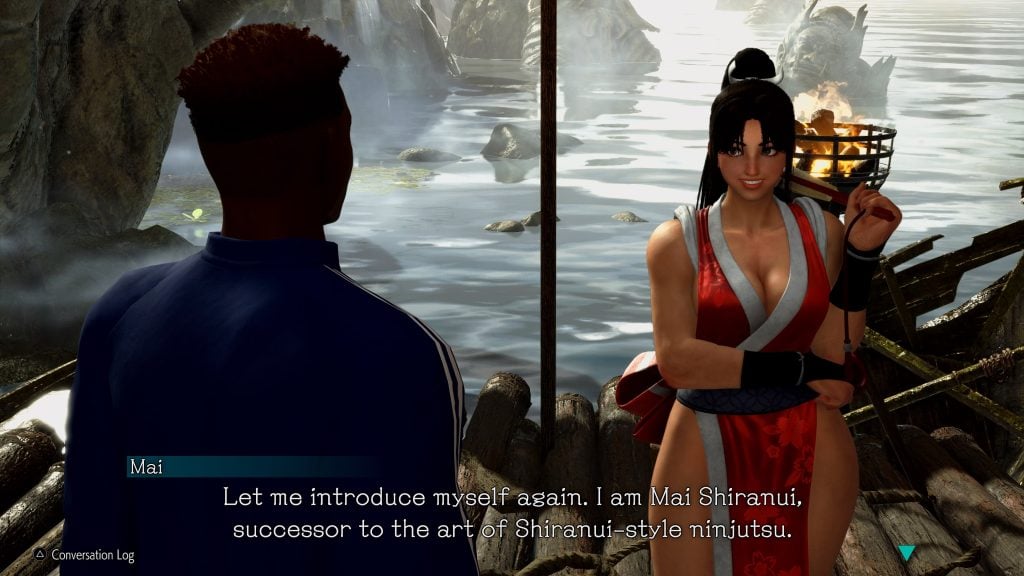
The newcomers (though they’ve been around for a couple years now) manage to make their mark and fit right in. A breakdancing drunken boxer, a fashion model judoka, whatever the hell A.K.I. is; they all bring either refined takes on past character concepts or introduce all new styles to the fold. Rounding things out are a couple of guest characters from SNK’s Fatal Fury. Terry Bogard and Mai Shiranui all fit right into Street Fighter while opening the door for who-knows-what down the line. Time will tell if this becomes a new gold standard for rosters in the series, but it’s off to a strong start with plenty of room to keep growing — more Street Fighter III, please.
Beyond the core, head to head fighting that’s always defined Street Fighter, the biggest piece of SF6 is its World Tour mode. Street Fighter has never had a robust single player offering like this, and for any rough edges the experience has, it’s at least a welcome addition to the package. The story isn’t compelling and the mechanics don’t always feel well thought out, but there’s a lot of fun to be had here in an old school beat em up kinda way.
You’ll start off by making an avatar, with Capcom’s character creator allowing more freedom and flexibility than I’d have expected in a fighting game. Your silent focal character is driven just by wanting to know what strength is, leading them to learn from the entire playable roster. Doing so lets you use their techniques, customizing your moveset within a few limitations as you level up and utilize a light RPG system to increase stats and equipment as well as build up your relationships with your masters.
All of that is dressing for what this mode really is — running around Final Fight’s Metro City and getting into fights with strangers. Even a dozen plus hours in, that doesn’t really get old. Quests aren’t compelling and serve as more excuses to punch strangers. I appreciated the mini objectives in each fight, though some could be frustrating paired to CPU behaviors. You do get rewarded with some character moments from the Street Fighter cast, who traditionally haven’t been all that fleshed out in their own games, so if you’ve always wanted to see more of the world of this series, this is the mode for you.
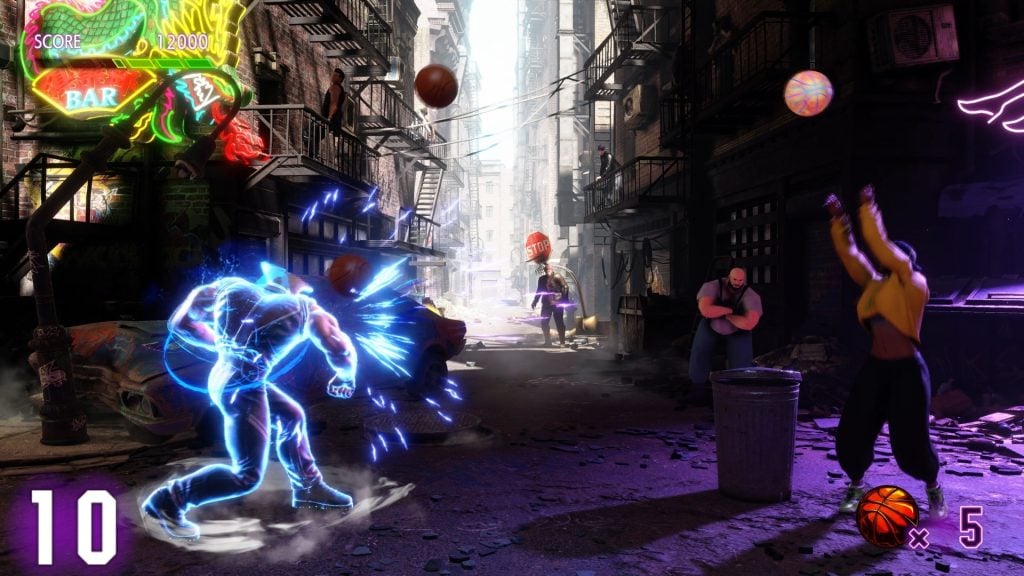
As mentioned, SF6 divides itself cleanly into three modes. Of the other two, Fighting Ground is the most straightforward and universal — it’s where you’ll find staples like Versus, Arcade, and character specific tutorials and Combo Trials. Battle Hub also doesn’t need too much elaboration. It’s a living online lobby, where your avatar runs around an arcade space and can interact freely with others, including fighting against other avatars.
As far as lobbies go it’s got enough flourishes and personality to stand out. Of special note are the classic Capcom games you can play here as well, which have their own leaderboards and see new ones rotate in periodically. That said, I’m not drawn in by all its (largely optional) bells and whistles.
This is as good a time as any to say I’m not a fan of Street Fighter 6’s seasonal premium battle pass (“Fighting Pass”) system. Is it fairly typical for games as service titles? Yes. Do I want Street Fighter to be entrenched in a games as service model? No. I don’t think it’s fun to push myself over specific, limited time only goals or exp grinding so I can gather up premium cosmetics and get what I paid for the pass back before they’re gone.
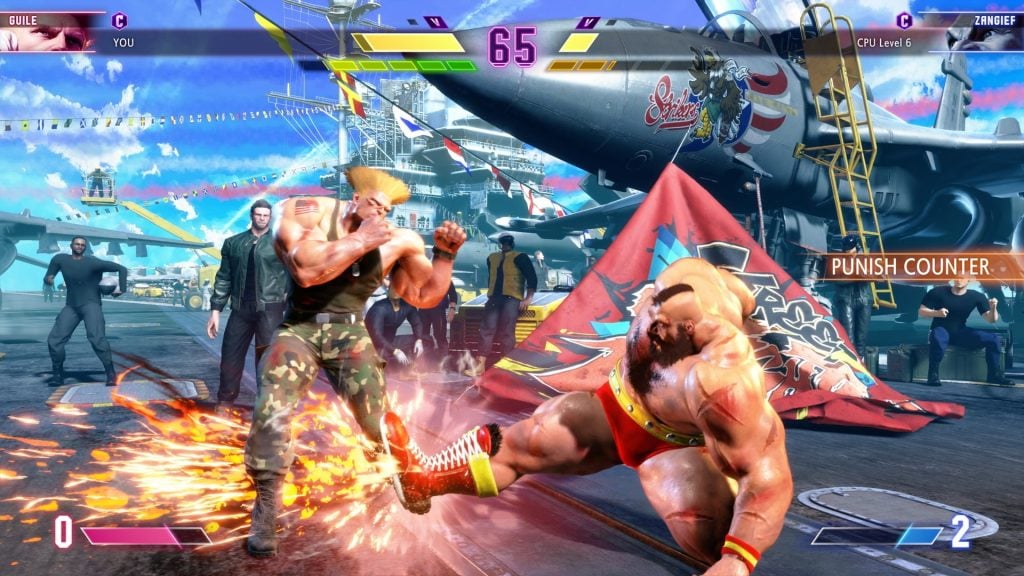
It could be argued that a lot of this comes naturally if you just play the game, and this isn’t exactly a fresh take, but the point still stands. I do appreciate the themed ones tied to other Capcom games, but please don’t make this the only way I can potentially support Darkstalkers and Rival Schools.
Street Fighter 6 is a fantastic fighting game — make no mistake about that. Everything around that fighting game feels somewhat polar. On the one hand you have a novel single player story that’s more in-depth than anything the series has done before. With some improvements in a future game it could even be a great signature element moving forward. On the other hand, you have some poor ideas pulled from modern online games in an effort to drive more revenue.
Regardless, I’m playing this one regularly and eager to see how the next year of new content and characters goes. Street Fighter V had about a five year lifecycle, putting us potentially right in the middle of what’s to come from 6. It’s a great get for the Switch 2’s library right out of the gate, and a positive sign of what’s to come from ports of recent titles for Nintendo fans.
Leave a Comment
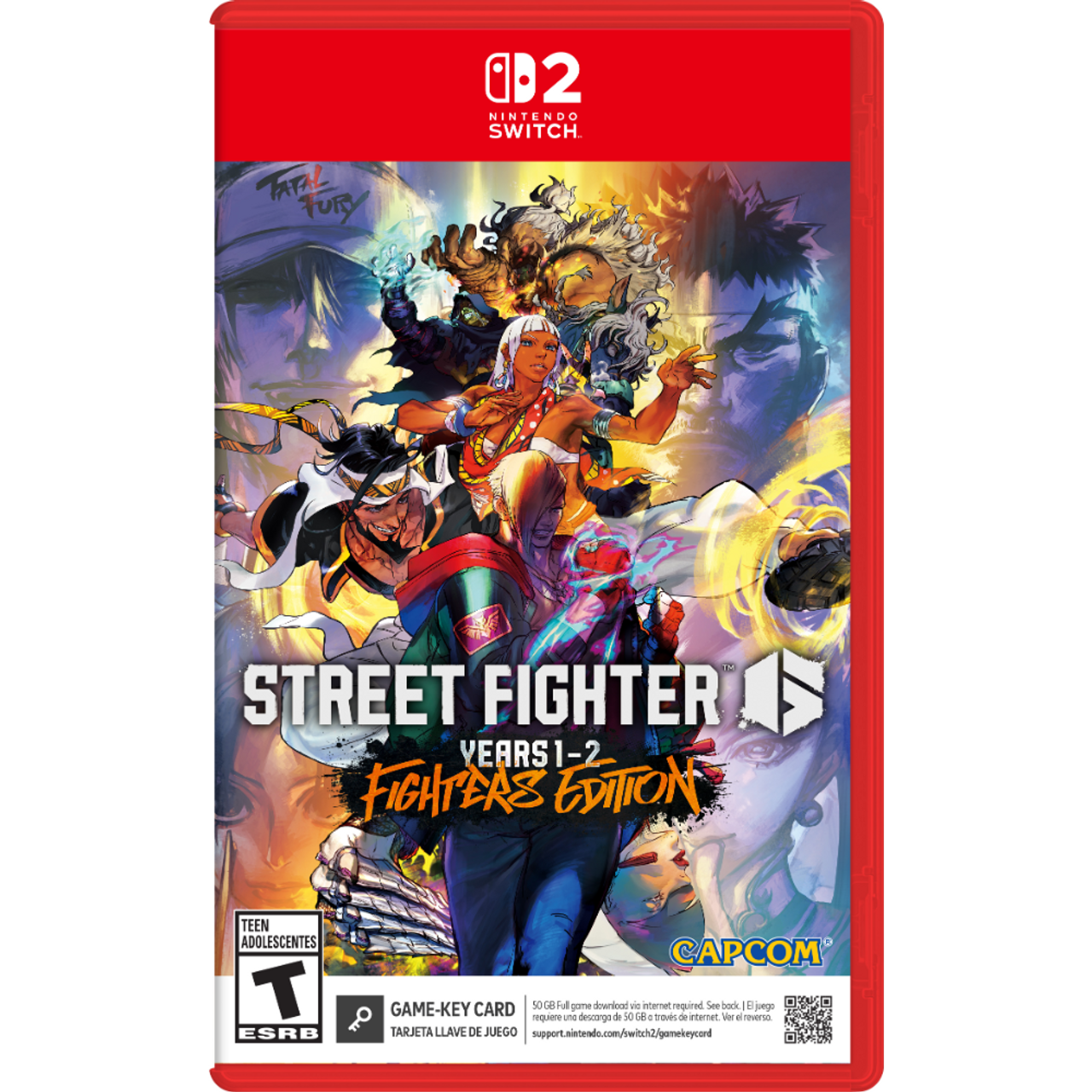
System: Nintendo Switch 2
Release Date: June 5, 2025
Categories: Fighting
Publisher: Capcom
Developer: Capcom
